© 2023 All Rights Reserved. Don’t distribute or repurpose this work with out written permission from the copyright holder(s).
Printed from https://www.damninteresting.com/the-ancient-order-of-bali/
Within the Seventies, the Indonesian island of Bali went by way of a interval of speedy change. Alongside the beautiful seashores on the southern aspect of the island, tourism boomed. Parking heaps had been put up, along with swinging scorching spots and accommodations of assorted colors. Hip younger travellers from North America, Europe, and Australasia had “found” the island and started exploring its superior browsing breaks, ingesting within the newly-built bars, and spending cash. There have been penalties, good and unhealthy, for the Balinese individuals. Residing requirements elevated—as did the island’s inhabitants. The remainder of Indonesia skilled progress too, and the nation quickly wanted extra of an important meals staple: rice.
As builders paved paradise alongside the coast, within the hills and mountains of Bali’s inside the authorities carried out a program of insurance policies dubbed Bimbingan Massal, or “Huge Steerage”, meant to extend rice manufacturing and modernise agriculture consistent with the most recent worldwide pondering. Huge Steerage was a credit score scheme funded by the Asian Growth Financial institution, which strongly incentivised adoption of recent Western-developed farming strategies within the type of ‘know-how packets’ containing quick rising and high-yielding rice varieties, synthetic fertilisers, and pesticides. These improvements had already lifted thousands and thousands out of poverty and starvation elsewhere on the planet, as a part of a world transition from conventional to excessive depth farming practices—the so-called Inexperienced Revolution.
The authorities knew that Bali already boasted a remarkably bountiful panorama of conventional moist rice cultivation. Rice is semi-aquatic, and round 6,000 years in the past, people found that submerging the crops underneath a number of centimetres of water for big elements of the plant’s rising cycle stored weeds at bay, drastically bettering manufacturing. However there was no cause—the specialists figured—why Inexperienced Revolution strategies couldn’t improve the island’s rice manufacturing but additional.
From 1970, the federal government urged Bali’s growers to dig deep into their new know-how packets and repeatedly sow as a lot high-yield rice as potential as shortly as potential. For a number of years, this method bore rice. There have been small however measurable will increase in yields, adequate to persuade the authorities that this system confirmed promise, however possibly wasn’t fairly large sufficient.
In the course of the last decade, issues began to go unsuitable. Plagues of bugs and different pests attacked rice crops, typically quicker than the brand new pesticides might beat them again. And farmers in some areas skilled faltering irrigation flows and dry fields—one thing beforehand virtually unknown on Bali’s verdant rice terraces.
Within the midst of this rising catastrophe, a younger, long-haired anthropologist from America arrived on the island. When he realised the dimensions of the slow-motion disaster, he began asking some elementary questions. Ultimately, with the assistance of contemporary computing, he and his staff of American and Balinese scientists would slowly reveal a never-before-seen organisation that had formed the island for a thousand years—one which was now at risk of collapse.
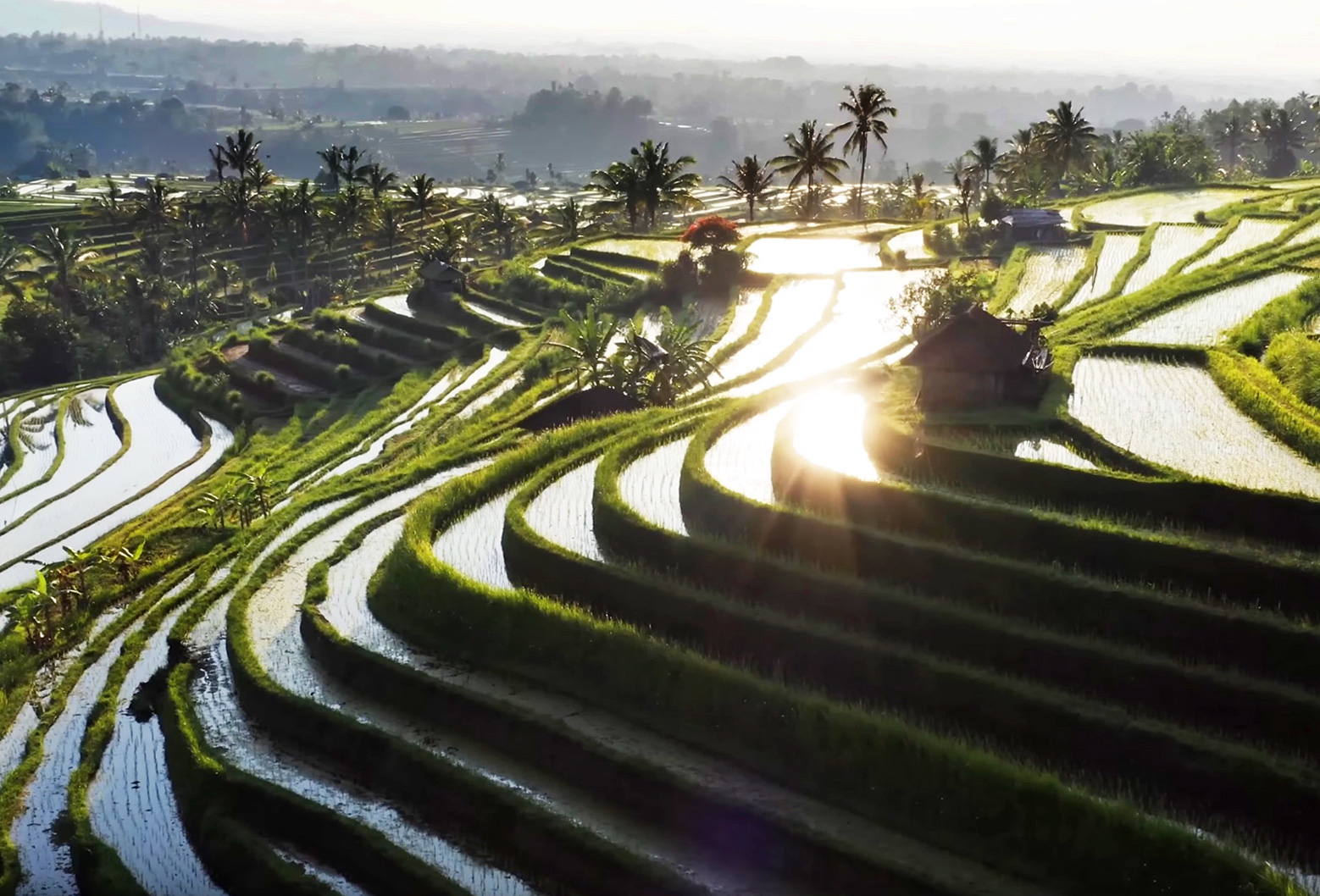
Lengthy earlier than the American arrived, Bali’s rural panorama had captivated travellers from distant shores. One such customer, a British naturalist named Alfred Russel Wallace, arrived in northern Bali in June 1856, as a part of an eight year-long exploration of the pure historical past of the area. Though his major curiosity was the gathering of organic specimens, Wallace discovered himself unusually drawn to Bali’s rice terraces. He later wrote:
The entire floor of the nation is split into irregular patches, following the undulations of the bottom, from many acres to a couple perches in extent, every of which is itself completely stage, however stands a number of inches or a number of toes above or under these adjoining to it. Each certainly one of these patches will be flooded or drained at will by the use of a system of ditches and small channels, into that are diverted the entire of the streams that descend from the mountains. Each patch now bore crops in varied phases of progress, some virtually prepared for slicing, and all in probably the most flourishing situation and of probably the most beautiful inexperienced tints.
Wallace had seen loads of rice fields and irrigation channels earlier than. But these ones had been in some way…totally different. Intricate, and environment friendly. A marvel of engineering. It was the center of the dry season, but the well-watered terraces had been bursting with wholesome crops. Someway, Balinese farmers had been in a position to present their fields with the required water all by way of the yr. Wallace later singled out Bali’s lush, productive panorama in his well-known scientific travelogue, The Malay Archipelago, contrasting it favourably to the barren look of different islands through the dry season. The island’s elaborate rice irrigation community, Wallace famous, “produces the impact of a perpetual spring.”
However Wallace was solely in a position to spend two days on the island earlier than transferring on to the following cease on his journey. Though his keep on the island was not lengthy, it proved important.
It was greater than a century later when the American anthropologist J. Stephen Lansing arrived in Bali. His authentic curiosity was the island’s distinctive human historical past and faith. Inside the huge multi-island nation of Indonesia, Bali is a largely Hindu group surrounded by Muslim-majority islands. Lansing first visited the island in 1971 as an undergraduate, dwelling with a Hindu priest’s household for a number of months whereas learning Balinese language and tradition. By the top of his go to, he knew two issues for certain: that he wished to be an anthropologist, and that he could be again. In 1974, he duly returned to Bali to undertake fieldwork for his doctoral dissertation. This time, he could be investigating the historical past of the numerous temples dotted across the island. The temples are available a wide range of sizes and kinds, being devoted to a variety of various deities all thought of, inside the Balinese model of Hindu theology, to be manifestations of the identical supreme God.
Discovering the aim and historical past behind these temples was not at all times simple for an outsider. To overseas eyes, all of them look very comparable, and until visited on competition days—when the previous buildings come alive with color and celebration—lots of them seem empty and deserted. So Lansing relied on conversations with native individuals to unravel the buildings’ tales.
However at any time when he got here throughout one explicit kind of temple—particularly the pura tirta, or water temples—these conversations veered off in an surprising course. Native farmers batted away questions on myths and rituals and suchlike, and began speaking about rice: rice yields, rice pests, rice irrigation. And the farmers weren’t comfortable. Crops had been failing and their livelihoods had been underneath menace. One thing was going unsuitable of their rice terraces, and it was in some way linked to the temples. Lansing knew that the federal government had lately began to impose Inexperienced Revolution modifications on the island’s farmers—and an thought was germinating.
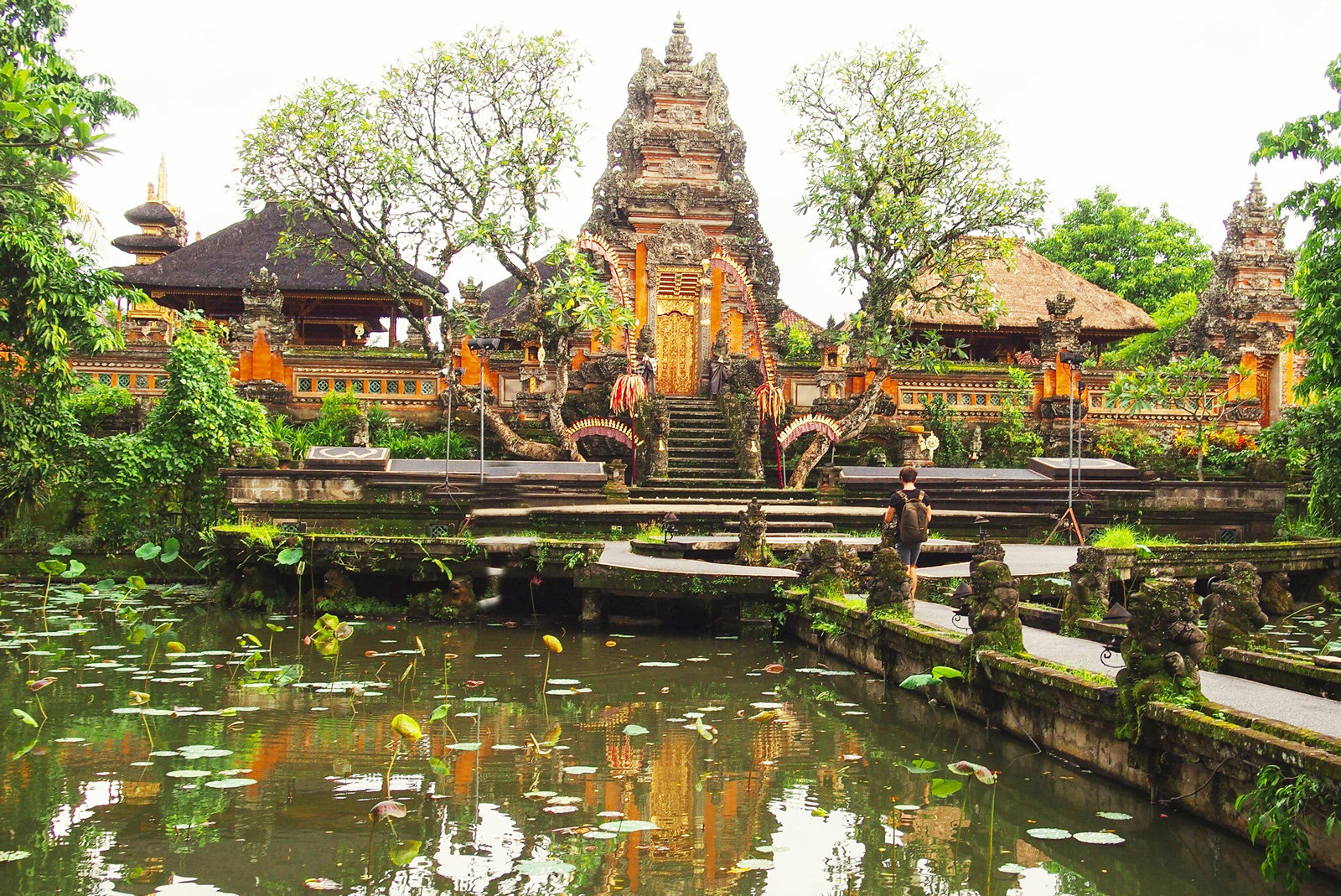
However he nonetheless had a dissertation to complete, and an anthropology analysis profession to ascertain. It was not till almost a decade later, in 1983—now working from the College of Southern California, and the proud recipient of a US Nationwide Science Basis grant—that Lansing was ultimately able to return to Bali to review the water temples, and their more and more disgruntled farmer congregations.
It didn’t take him lengthy to find out that his earlier thought had progress potential. The water temples Lansing had mentioned with exasperated farmers existed primarily to venerate the water goddess Dewi Danu, one of the crucial necessary deities of Balinese Hinduism. However Lansing realised they could additionally serve a sensible perform. Traditionally, and till very lately, the temples had been concerned in setting irrigation and planting schedules for rice growers of their respective areas.
This twin position was potential due to the temples’ shut affiliation with a centuries-old Balinese rural establishment often called a subak. Subaks are water administration organisations comprising all of the rice farmers in an space served by a shared water supply—be {that a} spring, a lake, or water impounded by a weir throughout a stream. Subak members, sometimes numbering between 50 and 400 rice farmers, often meet to deal with problems with frequent curiosity—the foremost being, the truthful division of water for his or her fields—and to pool their labour and sources to take care of the native irrigation community. In an in any other case hierarchical and caste-conscious society, subaks stand out as extremely democratic and egalitarian organisations. An elected subak chief officiates in month-to-month conferences performed utilizing strictly caste-neutral language. All subak members have a say in proceedings, as a result of all have a stake within the end result of the subak’s shared decision-making.
The bodily outcomes of subak selections are seen all throughout rural Bali. As Wallace had famous the earlier century, the island’s panorama is a very elaborate instance of terracing, a observe used worldwide to facilitate farming on steep hillsides. However on Bali, the dense mosaic of terraces is supported by massive river-spanning weirs; kilometre-long tunnels hand-hewn by way of the partitions of sheer-sided mountain gorges; exactly engineered wood move dividers allocating water between terraces; and flawlessly graded irrigation channels which, from sure angles, idiot the attention into seeing an uphill move.

In a panorama so clearly sculpted by the practicalities of water distribution, the cultural significance of the water temples was not so shocking. However Lansing’s close-up examine of particular person subaks allowed him to recognise that subak boundaries and membership correspond exactly to the areas and congregations served by every native water temple. Every water temple was situated near the native subak’s water supply, and subak conferences had been held within the temple courtyards. In these conferences, clergymen and farmers noticed no distinction between the religious and sensible elements of water administration. In the end, all water belongs to Dewi Danu, and truthful allocation of her aqueous blessings is seen as a type of worship, symbolised by the distribution of tirtha, or holy water. Lansing additionally recognized a separate tier of bigger supra-local regional water temples equally co-located with upstream water sources, which hosted common regional conferences of subak leaders. On this manner, subak decision-making in any respect ranges was imbued with the Highest of All Doable Authorities. As a Balinese saying places it, “the voice of the subak is the voice of God.”
However occasions had been a’changin, and never for the higher. Though the spiritual lifetime of the water temples continued, Lansing noticed how Huge Steerage had wrenched aside the religious and the sensible elements of water administration. The authorities distributed know-how packets containing excessive yield rice seed to farmers freed from cost. Fee could be deducted at harvest time when growers offered their crops again to the federal government—but when farmers wished to take full benefit of the brand new fast-growing varieties, they wanted to supply three crops a yr. The temples had by no means scheduled greater than two crops a yr, with a cleaning post-harvest fallow interval of a number of weeks between reaping and sowing. With the soil pressed into year-round service, common software of synthetic fertilisers grew to become obligatory—and the vegetation had been a lot thirstier.
The clergymen carried on with their rituals, however accountability for setting planting schedules returned to particular person rice growers. The federal government inspired every grower to throw open their irrigation channels and flood their fields with as a lot water as their crops required, as typically as required. It was each farmer for himself. The federal government didn’t think about water provide to be an issue, as a result of there had by no means been important water shortages on the island earlier than. And if obligatory, know-how would make up any shortfall, within the type of gleaming new irrigation infrastructure—together with fashionable steel sluice gates and huge machine-built dams and canals.
And so the Inexperienced Revolution rolled over the island. Ranging from 1970, rice growers regularly deserted the previous methods and adopted the brand new. This didn’t imply they had been pleased with the modifications. Officers found that in some areas the lately put in steel sluice gates had, unaccountably, been raised out of the water and left to rust. Because the farmers—wide-eyed with innocence—defined to the bureaucrats, this necessitated going again to the previous wood fractional dividers. Regardless of such outbreaks of plausibly-deniable sabotage, total and over time a major proportion of rice growers did change their practices. Authorities strain to make use of the brand new strategies was intense. At one level, temple-based irrigation scheduling was outlawed. Accordingly, the advanced interrelationships between rice vegetation, pests, and other people shifted.
Then, from the mid Seventies, a torrent of disasters struck at Bali’s rural coronary heart. It was virtually as if the Gods had been offended—or maybe one Goddess particularly. Abrupt explosions of rice pests troubled crops, together with rats and different rodents, bugs, and rice-consuming pathogens of every kind. In 1977, the island misplaced a whole lot of hundreds of tons of excessive yield rice to a infamous species of insect pest named the brown planthopper. Agronomists developed new planthopper-resistant rice varieties, and the scenario stabilised for a time—however in 1983 the island’s rice crops suffered a devastating outbreak of the illness tungro. So the farmers planted new tungro-resistant rice, just for their fields to suffer from rice blast, which led to them planting even newer and extra disease-resistant rice varieties which, it quickly transpired, had been vulnerable to helminthosporium. Between deployments of recent rice varieties, authorities and growth company advisors inspired farmers to succeed in ever deeper into their know-how packets and apply pesticides in escalating doses. On this manner, Balinese farmers discovered themselves caught up in a spiralling pest-versus-people biochemical arms race. By the mid-Eighties, plane had been spraying huge portions of pesticides over Bali’s rice terraces.

In the meantime, the island’s coastal ecosystems had been hit by an surprising plague of inexperienced slime. A lot of the nitrogen and phosphate fertiliser from farmers’ know-how packets had discovered its solution to the ocean. This resulted in damaging inexperienced algal progress smothering the island’s prized coastal coral reefs, in flip threatening the island’s fishing and tourism industries. Frustratingly, this eutrophication occurred regardless of analysis displaying that the fertile, mineral-rich volcanic soils of the island ought to have rendered such synthetic supplementation superfluous—no less than if conventional rice varieties, with their modest progress charges, had remained in widespread use.
And in case there was any doubt which deity could be linked with these occasions, the beforehand dependable supply of water from the island’s irrigation community started to falter. Farmers might now not make sure of receiving the required volumes of water for his or her crops on the required occasions. When the Asian Growth Financial institution despatched its representatives into rural Bali to evaluate the progress of the Inexperienced Revolution, the studies touchdown again on the desks of the financial institution’s executives described “chaos” within the previously impeccable irrigation system.
In brief, Huge Steerage bumped into large issues. One evaluation confirmed that regardless of the rapid-fire modifications and thousands and thousands of {dollars} of funding poured into the island’s agricultural system, within the 4 years main as much as 1978, Bali’s common per hectare rice yield elevated by a measly 2%—at the price of important environmental and social disruption. And due to the elevated power inputs into the system—a lot of it embedded within the manufacturing of fertilisers and pesticides—Balinese rice farming was now not the mannequin of effectivity so admired by earlier generations of holiday makers.
In Lansing’s anthropological opinion, these issues had been as a result of incompatibility of contemporary Inexperienced Revolution strategies with the island’s conventional subak system. He repeatedly tried to warn the authorities that their insurance policies risked lasting harm to Bali’s tradition, agriculture, and setting. However to no avail. The opinion of 1 long-haired Californian educational carried as little weight because the protests of the farmers themselves. The authorities pointed in direction of the success of the Inexperienced Revolution elsewhere, and asserted that the underlying drawback—if certainly there was one—was not sufficient Inexperienced Revolution.
Regardless of such setbacks, there was nonetheless science to be achieved. As Lansing mulled over what he had realized, he started to suspect that the implications prolonged past the issues of Balinese rice farmers and into one thing extra elementary. Particularly, the examine of programs. Lansing’s educational background meant that he was singularly well-placed to analyze these implications. As an undergraduate, he had learn voraciously throughout the bodily sciences, the social sciences, and the humanities. On getting into faculty, his intention was to main in physics. Nonetheless, his life-changing six months with the priest’s household in Bali turned his profession in a distinct course. And now, one thing about Bali’s conventional irrigation practices stirred his dormant mathematical instincts. Huge Steerage was inflicting the standard irrigation system to interrupt down, with unexpected and unlucky penalties—however why had the previous system functioned so nicely within the first place?
At this level Lansing realised he wanted extra information, and he wanted assist. In 1986, after a number of years primarily based in Bali, he returned to the US and secured the help of a marine biologist and programs ecologist named James Kremer. Kremer had expertise with a cutting-edge analytical method often called “laptop simulation modelling.” Though the 2 lecturers didn’t know one another nicely, each held college positions on the College of Southern California, and each had been aspiring surfers. Kremer invited Lansing to his native seaside in Redondo, close to Los Angeles, and it was there—because the waxed-up researchers bobbed gently in a lull between waves—that the 2 first mentioned the gnarly drawback of Bali’s rice paddies. Initially, Kremer wasn’t certain how he might assist. Fortuitously the surf that day wasn’t sufficiently big to interrupt the required explanations, and regardless of some ongoing qualms from Kremer, each males had been quickly heading to Indonesia.
Again in Bali, Lansing had already cast hyperlinks with native scientists, together with a senior researcher on the Ministry of Agriculture, Wayan Alit Arthawiguna, and a conservation biologist named Sang Putu Kaler Sura. Their deep understanding of the native setting and tradition proved invaluable within the months and years that adopted. Lansing had widened his consideration to bigger teams of subaks spanning total watersheds, and the staff had performed discipline surveys, videotaped subak conferences, and picked up native agricultural and environmental information. Over time, extra educational contacts and colleagues had been pulled into the undertaking to assist reply a snowballing array of rice cultivation and water temple-related questions. In the end a big, continuously morphing staff of principally Balinese and American researchers—together with biologists, laptop scientists, economists, historians, and archaeologists—pieced collectively a complete image of the island’s conventional water temple-subak system, and the way it had come to be.
Kremer’s background in laptop simulation modelling proved to be essential for the investigation. However when Lansing first confirmed his biologist colleague across the island’s rice terraces and water temples, Kremer remained uncertain how he might assist. His experience was in programs ecology, a broad-based but mathematics-heavy self-discipline that spans the interface between biology, chemistry, and physics. His explicit curiosity was marine ecosystems—however Lansing was insisting on displaying him an unlikely mixture of land-based Balinese tradition, faith, and agronomy.
As he thought of subak practices in additional element, nevertheless, Kremer was struck by the ecological relevance of what he noticed: the advantages of repeated flooding, fallow intervals, and the harvesting of eels and small fish from rice paddies for meals, contrasting with the unfavourable impacts from the brand new brief, fast-growing, and thirsty rice varieties that had been changing the standard tall, slow-growing and pest-tolerant varieties, and the related improve in fertiliser use. He realised that the rice planting schedules historically set by the water temples might be linked to different parameters, similar to rainfall and rice yields, and their relationships described mathematically utilizing differential equations—in the identical manner he might need linked fluctuations in microscopic algae ranges to the numbers of grazing zooplankton within the extra acquainted setting of a coastal marine ecosystem. Maybe he might contribute one thing helpful in spite of everything. By the top of his first go to to Bali, Kremer was prepared to modify on his Macintosh private laptop and begin inputting information. The ecologist had a mannequin to construct.

Whereas Kremer regarded on the overarching ecosystem implications of subak practices, different collaborators helped unpack smaller scale dynamics inside the system. Specifically, the staff’s understanding of what occurred at particular person farmer stage was enriched by later enter from an economist named John Miller. Miller realised that the allocation of water inside a subak might be described by a department of arithmetic often called recreation concept.
The staff in Bali had already noticed that neighbouring upstream and downstream farmers cooperated carefully when it got here to sharing out irrigation water. However in concept, upstream farmers held all of the playing cards by having the ability to management irrigation flows for the advantage of their very own crops. At first look, there was no apparent cause for upstream farmers to coordinate with water-limited farmers decrease down the mountains. However—as native biologists and the farmers themselves might attest—upstream farmers really had a robust incentive to cooperate: pest management. When farmers synchronised planting and harvesting over contiguous areas of hillside, the simultaneous flooding of their fields through the post-harvest fallow interval supplied a key pest management perform. Pest species—such because the cereally-offending brown planthopper—discovered themselves starved of meals throughout an unhoppably vast and riceless expanse of flooded land. Their populations would plummet. However when totally different farmers offset their cropping cycles by planting in a piecemeal and uncoordinated manner, the panorama grew to become a fine-grained patchwork of fields at totally different phases of progress and inundation. This patchwork was a haven for rice pests and pathogens of every kind. Pests—in contrast to water—can transfer uphill virtually as simply as down, and may shortly shift their consideration to patches of juicy new progress. After a number of brief rising seasons, this unsynchronised planting produced explosions of pest populations—as Huge Steerage demonstrated so successfully—whereas conversely, the standard observe of synchronised cropping stored pests underneath management.
However synchronised cropping additionally meant synchronous demand for big volumes of water in the identical areas through the progress and fallow phases of rice cultivation. These sharp spikes in demand had the potential to trigger water shortages for downstream growers.
Sport concept supplied a framework to analyse and perceive the trade-offs required to resolve the dilemma. For the upstream farmer, planting would ideally be synchronised as a lot as potential for optimum management of pests—when water provide was not a problem. However the downstream farmer needed to steadiness each pest management and water necessities, treading a a lot finer line. Miller’s recreation concept evaluation confirmed that for a lot of eventualities, the mixed harvests of each downstream and upstream farmers could be bigger in the event that they negotiated a shared irrigation technique—both aligning their planting schedules or not, relying on pest ranges and water availability. When it comes to total harvest measurement, this labored much better than every farmer making particular person planting selections, and it typically held true even when the upstream farmer incurred a brief time period harvest penalty. In the long term, upstream farmers benefited from releasing a few of ‘their’ water in order that these downstream might synchronise their planting to maintain rice pests firmly of their place—no less than to the extent that the capability of their shared water provide permitted. They simply wanted a coordinating mechanism—which, the staff already knew, was supplied by the common subak conferences hosted by the native water temples.
However what was taking place at bigger scales? In actual fact, because of James Kremer, the staff already knew the reply: precisely the identical factor.
In 1988 Kremer accomplished his laptop simulation mannequin, ‘BaliMod.’ It was a outstanding achievement, efficiently capturing the purposeful relationships of 32 key environmental and agricultural parameters—together with rainfall, irrigation move, rice kind and pest ranges—affecting 172 digitised subaks strung alongside two Balinese rivers. Though the mannequin’s vast angle view couldn’t tackle the rationale behind particular person farmer selections in the identical manner as Miller’s later recreation concept evaluation, simulations run from the mannequin confirmed subaks controlling pests, minimising water shortages, and maximising harvests in exactly the identical manner.

And BaliMod confirmed this taking place throughout your entire simulated rice-growing panorama. Inside the no-consequence confines of the mannequin, the researchers might range the extent of synchronised planting and name down drought or floods at will, to see how the system was affected over the course of a yr. Positive sufficient, they discovered that when cropping schedules had been patchy and poorly coordinated throughout a watershed, pests ran riot and harvests had been considerably decreased; an impact that was most pronounced when excessive yield rice varieties had been planted. When the quantity of inter-subak synchronised cropping within the mannequin was dialled up, pest ranges fell and rice harvests improved—however when it reached a sure threshold the pest management profit was counteracted by a marked improve in water stress. This was attributable to the corresponding improve in watershed-spanning spikes of simultaneous water demand that occurred as rice cropping schedules aligned. At this level, the bodily infrastructure of the irrigation system might now not meet peak water necessities. Growing synchronisation additional solely resulted in parched and fewer productive—albeit largely pest-free—rice crops. The researchers discovered that the intermediate vary of synchronisation between these two extremes reliably produced bountiful harvests that had been remarkably tolerant of environmental fluctuations. And when the staff mapped mannequin outputs onto diagrams of watersheds marked with water temple places, one other reality jumped out: this synchronisation candy spot occurred on the scale of coordination overseen by the bigger, supra-local regional water temples.
Lansing’s anthropological analysis confirmed how this regional coordination labored on the human stage. The common conferences of subak leaders hosted by the regional temples allowed info on water allocations and planting schedules to “move uphill”—after which, again downhill when the subak leaders returned to their very own temples and handed on different subaks’ selections to their members—alongside, in fact, tirtha to point Dewi Danu’s approval. Water temples thus functioned as conduits for info change at each native and regional scales, permitting farmers’ planting schedules to coordinate at a number of ranges throughout the entire watershed-wide community.
Lansing later realised that each forms of evaluation—recreation concept and laptop simulation mannequin—present that the Balinese subak system approaches a degree of most theoretical effectivity recognized in arithmetic and economics as ‘Pareto Optimality’, or ‘Pareto Effectivity’. Pareto optimality describes a scenario the place no change will be made to a system that may make somebody higher off, with out making no less than one different individual worse off. It’s typically thought of to be an idealised, summary state. Economists discover it helpful as a theoretical assemble, however don’t anticipate to see Pareto-optimal programs working in the true world. But the researchers’ findings urged that the unique Balinese subak system got here remarkably near attaining Pareto optimality.
When Lansing’s staff checked out rice harvest information throughout the entire expanse of a watershed—in each actual and simulated Bali—they seen that no matter whether or not they had been situated upstream or downstream, cooperating farmers achieved very comparable rice yields at harvest time. Whereas economists are eager to level out that there’s nothing intrinsically truthful or equal about Pareto-efficient programs—the effectivity pertains to the productiveness of the entire system, not the equal allocation of sources to contributors—in observe, Bali’s subak system reliably generates similar-sized harvests for all taking part farmers. This meant that growers had been free from the insidious impact of rice harvest envy—which was necessary in a system that depended so closely on cooperation.
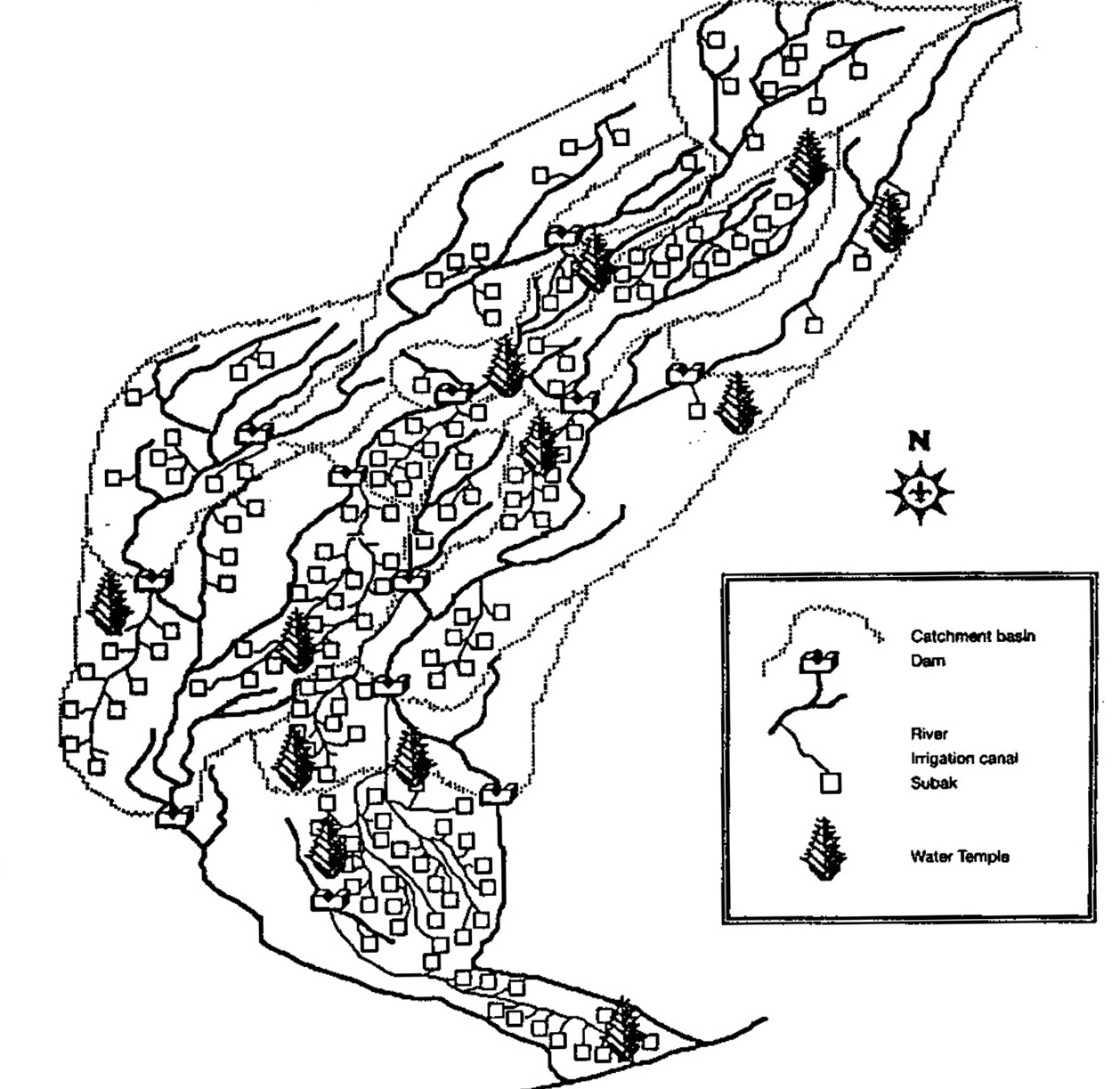
Kremer’s laptop simulation mannequin was compelling. After an applicable interval of testing, the staff judged that they had the proof they wanted. Later in 1988, in a big assembly room in the principle authorities Irrigation Workplace in Denpasar, the capital of Bali, Lansing and Kremer introduced BaliMod to a gathering of rapt Indonesian officers and water engineers. The mannequin was constructed with three language settings—English, Indonesian, and Balinese—and boasted a state-of-the-art graphical consumer interface based mostly on ‘HyperCard’ software program, a precursor of twenty-first century internet browsers. Blocky pixelated pagodas represented the temples, whereas jagged traces traced out branching rivers, irrigation channels and watersheds. Utilizing dropdown containers, customers might change the values of serious parameters similar to rainfall and pest ranges, and run their simulations.
After a prolonged session—Kremer demonstrating, Lansing translating—the researchers paused to take questions. It turned out that the Indonesian irrigation engineers had been engaged on a undertaking to ascertain shared cropping throughout subak areas, however had been discovering it inconceivable to precisely measure water wants by taking a look at particular person subaks. After they realised that every one the subaks in a watershed functioned inside a single linked community, this all of a sudden made sense. In the end, they understood that there was no want for a authorities division to barter cropping patterns and handle water flows on a subak-by-subak foundation, as a result of the system was already self-regulating.
Because the implications of Lansing and Kremer’s demonstration sunk in, one thing shifted and clicked within the depths of Indonesian forms. This time, it was now not one lone American anthropologist repeating the identical previous line about conventional irrigation practices being higher than fashionable agricultural strategies. Now Lansing had a concept, believable mechanisms, and arduous observational information—to not point out assist from a rising group of each Balinese and overseas scientists, and a shiny new laptop mannequin. This time, it was sufficient.
The irrigation officers asserted that the Public Works Division, the Agriculture Division, and the native tax workplace wanted computer systems, presumably to assist them perceive the mannequin’s implications on their respective spheres of affect. They had been much less satisfied by Lansing’s suggestion that farmers and water temple clergymen themselves would possibly discover the mannequin useful or attention-grabbing. Nonetheless, the presentation left the authorities with a lot to consider.
The slopes of Mount Batur, certainly one of Bali’s two energetic volcanoes, are cloaked with massed tiers of lush rice paddies and studded with shrines and temples devoted to the goddess Dewi Danu. However the mountain’s significance for rice farmers extends past these slopes, and all throughout the island. Contained in the volcano’s caldera, 1000 metres above sea stage, is a crater lake—Lake Batur—and above this, on the crater rim, is Bali’s supreme water temple: Pura Ulun Danu Batur. The temple website includes a posh of walled compounds and pagodas, and is among the island’s most necessary spiritual websites. It’s the literal and symbolic pinnacle of the water temple system. Yearly through the wet season, at a time dictated by the rising of the Pleiades constellation within the night time sky, native farmers and water temple clergymen undertake a pilgrimage to the temple to make choices and obtain tirtha from the ever-watchful water goddess. In line with native mythology, Dewi Danu herself dwells within the normally placid waters contained in the caldera, as Bali’s very personal Woman of the Lake.
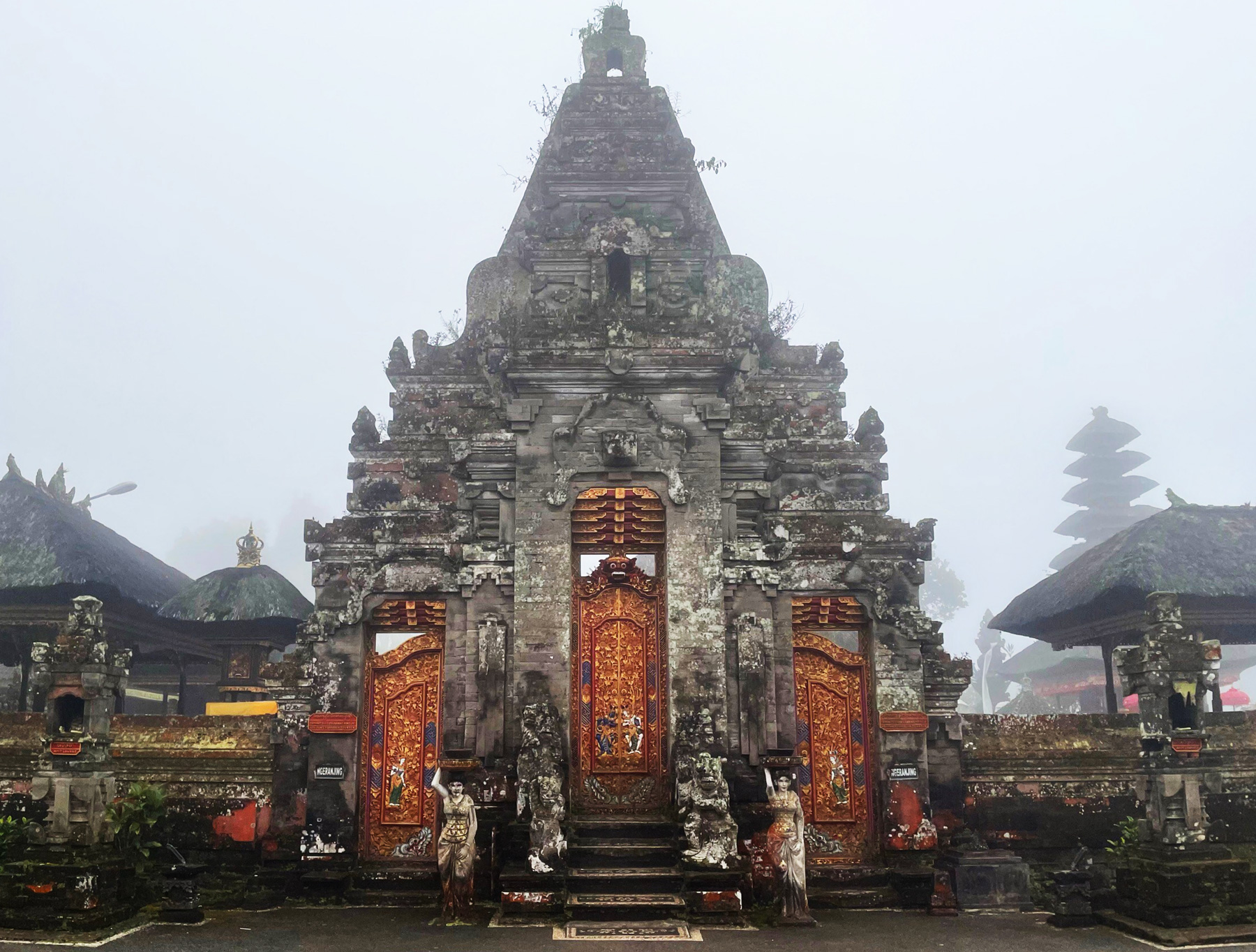
Just a few days after their presentation on the Irrigation Workplace, and regardless of authorities scepticism concerning priestly curiosity of their laptop mannequin, Lansing and Kremer lugged a cumbersome beige carry case to the temple on the high of the volcano. After they arrived on the temple they had been met by a cluster of temple clergymen, together with the Jero Gde, the excessive priest. The guests eliminated their footwear and sat cross-legged underneath the eaves of an open-walled pagoda whereas they defined their intentions. Contained in the case was a keyboard, mouse, and boxy base unit with built-in cathode ray tube show—a Macintosh SE private laptop.
Lansing and Kremer had not talked about their meant volcano go to to the Denpasar authorities. However the thought of presenting BaliMod to the federal government bureaucrats with out additionally displaying it to the water temple clergymen and farmers was unthinkable. It was their irrigation system, in spite of everything. However earlier than the researchers had time to arrange the tools and start their demonstration, extra guests arrived. Considerably awkwardly, they comprised a small group of presidency officers.
If any embarrassment ensued from this doubtlessly tense scenario, it was shortly smoothed over. Regardless of their preliminary misgivings, the bureaucrats within the Irrigation Workplace had independently concluded {that a} dialogue about BaliMod with the water temple priesthood could be useful for all involved, in spite of everything. Unsanctioned although it was, the presence of the American researchers turned out to be a contented coincidence, because it supplied a chance for everybody to see and talk about BaliMod, and its implications, collectively.
After the demonstration, somebody requested the Jero Gde if he thought the mannequin could be helpful to the Balinese clergymen and rice growers. It was a loaded query, and one which Kremer—not eager to unduly affect the individuals on the centre of the system he was learning—had thus far been cautious to keep away from. The Jero Gde didn’t reply instantly. He regarded away from the gathering, as if to gather his ideas. Then he replied, “Sure, this might be helpful for displaying farmers how their subak is a component of a bigger community. It would assist them see how all the pieces works collectively.”
Not lengthy afterwards, the Indonesian authorities began the method of selectively reversing their agricultural insurance policies of the earlier decade. To the farmers’ nice reduction, they allowed water temples to coordinate rice planting and irrigation schedules as soon as once more. Now the query was how lengthy it could take the system to get well—or if it could in any respect.
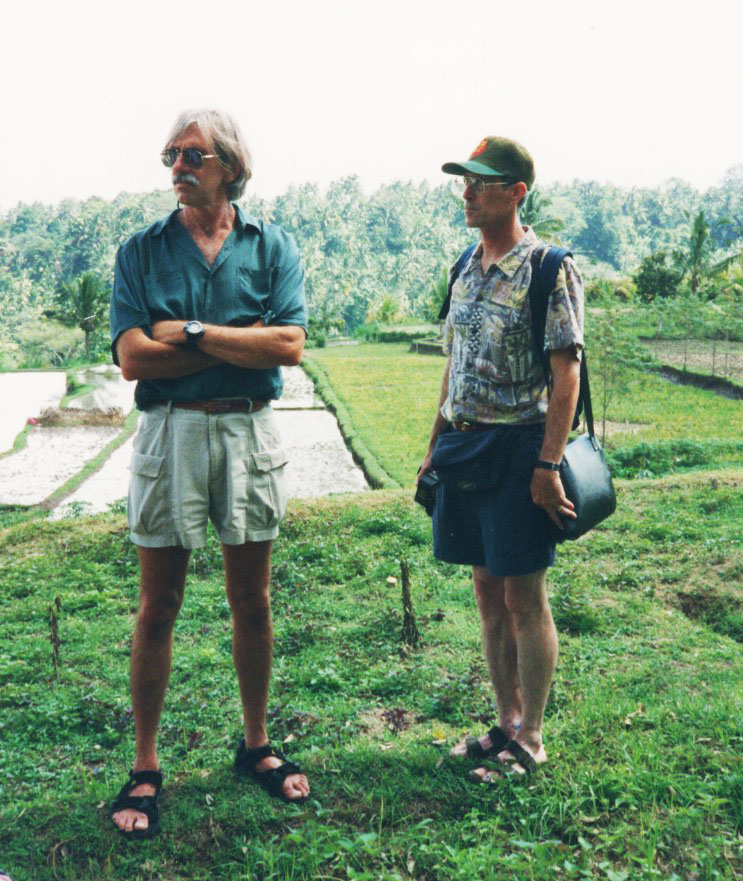
In the meantime, Lansing restlessly probed the ramifications of what was now recognized, within the educational literature, because the Lansing-Kremer mannequin of Balinese irrigation. After presenting the staff’s findings in a lecture on the Santa Fe Institute in New Mexico in 1992, a query from an viewers member received the no-longer-quite-so-young anthropologist pondering. The query was about whether or not the Balinese subak system displayed a property often called emergence. In programs science, emergence is the phenomenon that happens when a system begins to show options that its particular person parts don’t show on their very own; for instance, a single termite is usually innocent and ineffectual, however a colony of termites can construct huge, advanced mounds with air flow and cooling buildings. In different phrases, emergence is what occurs when a complete turns into higher than the sum of its elements.
This, Lansing determined, was an attention-grabbing query—and one he might examine by going again to BaliMod. He designed his personal simulation experiment that tweaked the mannequin, and the tactic of its execution, in a number of necessary methods. Somewhat than use real looking beginning values for the mannequin parameters, he would start with fully random preliminary cropping patterns. Then, after the primary yr, he would let every subak determine its personal cropping schedule for the following rising season utilizing a easy choice rule: to undertake the rice planting technique of probably the most profitable of their 4 closest neighbours. If a subak’s personal harvest was higher than any of its neighbours, it could retain its present cropping schedule for the following yr. He would then run the simulation for a number of consecutive seasons, and monitor the end result over time. When Lansing mentioned the concept with Kremer, his good friend was cautious. Each males thought of it possible that the simulation would lead to an indefinite chaos of disorganised and inefficient rice manufacturing, with subaks flipping crazily from one cropping sample to a different.
But it surely was order, not chaos, that emerged throughout the grid of simulated subaks. After wild preliminary oscillations pest ranges, irrigation flows and harvests stabilised comparatively shortly—in as few as ten rising seasons, or 5 laptop years of conventional Balinese double rice cropping. And the patterns re-emerged irrespective of how vigorously the researchers diversified the beginning situations. In actual fact, utilizing such a numerical evaluation—an aptly named hill climbing algorithm—it was virtually inconceivable not to develop a secure water temple-subak community. Though actual world subak planting selections had been undoubtedly extra advanced than the easy approximation used within the hill climbing evaluation, there was no cause to suppose that the elemental dynamics had been any totally different. In spite of everything, the outcomes remained according to noticed patterns of rice cultivation on Bali.
Now, trying throughout entire watersheds and a number of rising seasons, the researchers might see patches of synchronised and unsynchronised rice cultivation flip and roil throughout the hills in response to shifting situations, like murmurations of starlings or shoals of fish recoiling from a predator. They noticed a dynamic system able to adapting to modifications within the setting, whereas persevering with to ship optimum harvests. They usually noticed a system that was not simply self-regulating, however self-organising. It was as if the hills had been alive with the sound of subaks.
Pulling all the pieces collectively, Lansing arrived at a startling conclusion. He proposed that Bali’s thousand-year previous irrigation and rice cultivation community varieties a phenomenon recognized to programs scientists as a advanced adaptive system. Such entities comprise a number of interacting, purposeful brokers that comply with easy guidelines, but spontaneously organise into advanced, self-sustaining programs exhibiting options unbiased of their constituent brokers—in different phrases, they exhibit the emergence a lot studied and mentioned on the Santa Fe Institute in New Mexico. Such programs are mathematically self-similar, in that they perform in the identical manner at totally different scales, and their underlying dynamics are non-linear, so {that a} small butterfly-like change to an enter (for instance, diverting a small proportion of irrigation move from one set of rice terraces to a different) has the potential to lead to a disproportionately hurricane-esque output (for instance, a cascade of altered cropping patterns additional down the watershed). However as their title suggests, such programs develop and reply to modifications of their setting in a coordinated solution to preserve their construction, perform, and identification. Though the underlying dynamics could also be chaotic, these adaptive responses are normally adequate to maintain the system inside a continuously shifting however predictable vary of potential states recognized in nonlinear dynamics as a unusual attractor.
The theoretical framework underlying advanced adaptive programs, typically termed ‘complexity science’, is comparatively nicely established within the bodily and organic sciences. Particular person cells and organisms, energy grids, brains, immune programs, social insect colonies, and the web have all been described in these phrases. However complexity concept is much less recognised within the social sciences, and scientists and lecturers haven’t at all times been comfy with the underlying rules. One well-known biologist, writing in 1995, opined, “I’ve a basic feeling of unease when considering advanced programs dynamics. Its devotees are practising fact-free science. A reality for them is, at greatest, the end result of a pc simulation; it’s hardly ever a reality concerning the world.”
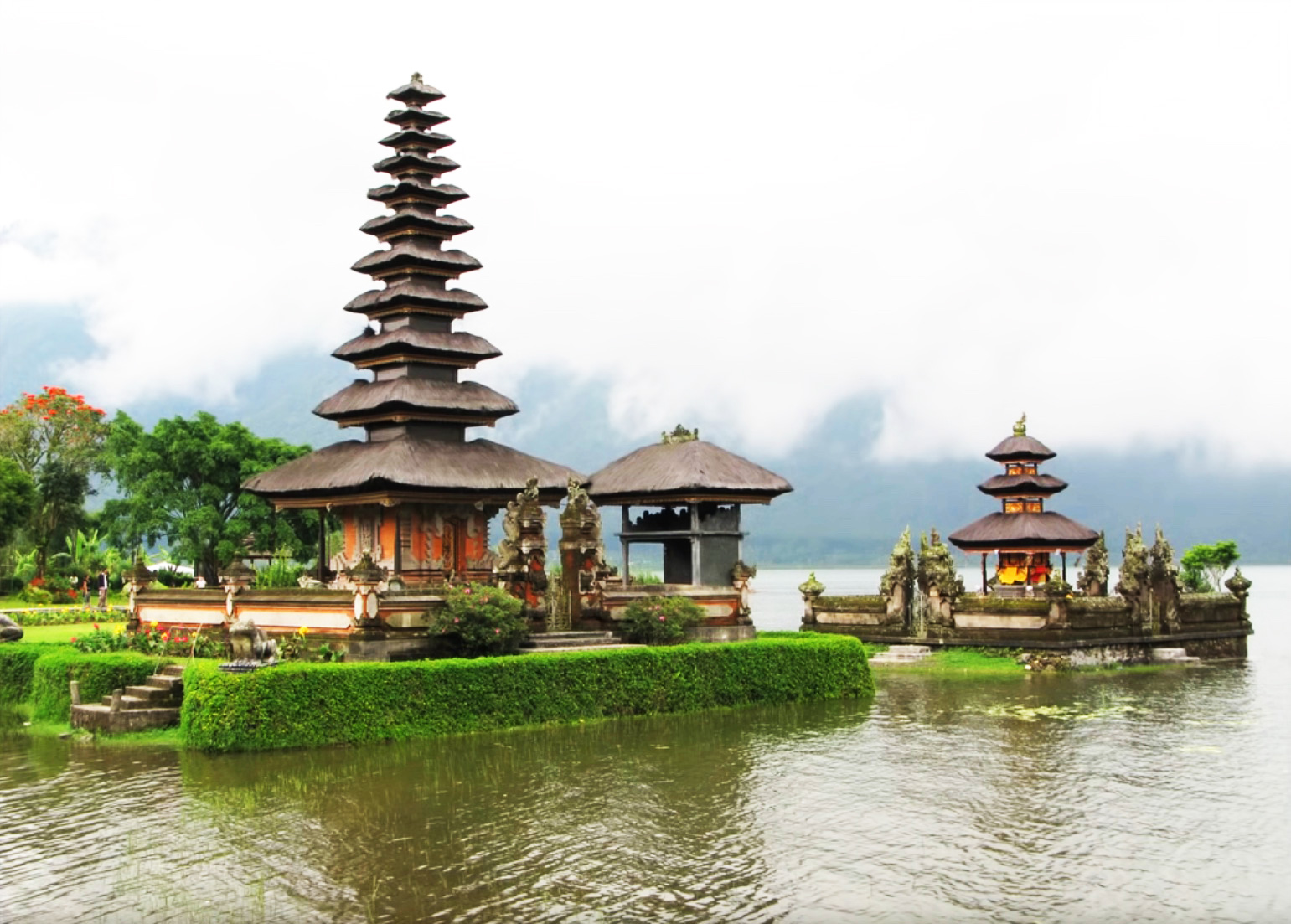
So when Lansing and his colleagues printed their theories about Bali’s subak system within the educational literature, the inexperienced shoots of their concepts met a flood of scepticism. A lot of the criticism circled round one unaddressed situation: how it began. If the subak system actually was a bottom-up, emergent phenomenon, how and why had it emerged within the first place—on condition that top-down hierarchies are such a characteristic of human societies normally, and Balinese Hindu tradition particularly?
And in any case, there had been some top-down parts in Lansing’s proposed set-up. Specifically, the supreme water temple on Mount Batur. Maybe the excessive temple clergymen had been issuing irrigation directions to the regional water temples under, and maybe the regional clergymen—working as a sort of spiritual-hydrological center administration—cascaded these directions to their subak-level underlings additional downstream. In brief, the critics argued, it was fully potential that correct inspection of the island would reveal a buzzing command-and-control irrigation forms.
But Lansing’s in depth analysis into practices on the native and regional water temples failed to search out something of the type. Whereas the temples facilitated info sharing and irrigation scheduling, there was no proof that the clergymen ever instructed the farmers what to do. In the meantime, his investigations of the supreme water temple on Mount Batur disbursed with the notion of an autocratic excessive priest or excessive temple forms orchestrating water flows from atop the volcano. It turned out that the Jero Gde exerted no formal authority over decrease stage temples, subaks, or particular person farmers. The place the Jero Gde did wield appreciable ‘comfortable energy’ was in bestowing approval on the founding of recent subaks, and in smoothing water-related disputes between present subaks. The excessive priest’s major technique of resolving arguments was to enchantment to the farmers’ sense of equity, and their devotion to Dewi Danu. And Dewi Danu wished everybody to share properly.
It was nonetheless fully potential that the autonomous elements of the subak system had been right down to good design reasonably than spontaneous self-organisation. Sooner or later within the distant previous, an enlightened king or grasp engineer might need constructed the irrigation system and set it working in line with a pre-ordained grasp plan. This made sense on an intuitive stage—anybody inspecting the intricately-engineered irrigation works could be forgiven for rejecting the concept that it might all simply occur by itself.
But historic data recommend in any other case. Till the Dutch colonised the island within the nineteenth century, and ranging from about the identical time as rice agriculture started one thousand years prior, Bali was dominated by plenty of regional kings often called rajahs. Inscriptions and surviving written accounts from residents and guests point out that the rajahs took a hands-off method to irrigation. Whereas they readily inspired enlargement of rice cultivation on the island, and therefore their tax base, there was no proof that the aristocracy undertook any precise planning or development. Every little thing was achieved by the subaks, for the subaks. When the Dutch conquered the island, they too left the subaks largely to their very own units for a similar revenue-related causes. Regardless of having their very own historic democratic community-led water administration organisations again house within the Netherlands—the flood defence co-operatives often called ‘water boards’—the Dutch colonisers by no means grasped the networked, self-organising nature of the subaks underneath their nominal management. And when the brand new nation of Indonesia absorbed the island after World Conflict 2, the Java-based central authorities maintained the identical method—till, that’s, they carried out the Inexperienced Revolution.
Within the late Nineties Lansing was in a position to collect discipline proof to assist his self-organising subak speculation. Drawing on earlier work by a Balinese archaeologist named Wayan Ardika, Lansing and an American archaeologist named Vernon Scarborough undertook a small-scale investigation of one of many earliest recognized websites of inland agriculture on Bali—a despair based mostly round two pure springs excessive on the aspect of Mount Batur, at a spot named Sebatu. Ardika had discovered inscriptions and burial websites close by indicating that rice cultivation had began someday inside the first millennium CE. In line with the subak sample replicated throughout rural Bali at present, the zone of cultivation centred round an historic water temple constructed immediately over the springs.
Cautious mapping and evaluation of soil cores within the space indicated that over the course of some 5 hundred years, the traditional farmers regularly prolonged the world of moist rice cultivation downstream by constructing an more and more intricate system of tunnels, aqueducts, and canals. The system finally reached a number of kilometres in size. The soil cores revealed that the place newly constructed channels opened onto hillsides earmarked for rice manufacturing, irrigation flows carried volcanic sediments onto the slopes under. These sediments flattened the land in a spreading arc across the outlet, offering a stage and nutrient-rich base for the brand new rice terraces. Wherever the underlying contours of the land permitted such sediment deposition, the cultivable space might be prolonged by small groups of farmers engaged in steady trial-and-error microengineering—a gradual, incremental evolution.
Lansing and his colleagues concluded that what drove the method, no less than partly, was Bali’s precipitous volcanic topography. The a number of ridges that splay out from the island’s peaks power water to move downhill in quite a few small rivers and streams. When the primary farmers arrived in every steep-sided new valley, they needed to tailor their rice cultivation and irrigation strategies to those hyper-local hydrological situations. Every group began out semi-isolated by the terrain, encouraging native growth by native farmers. As these small irrigation cooperatives grew in each quantity and extent, they started to hyperlink up and apply their hard-learned cooperative strategies to their dealings with one another. On this stepwise manner the processes scaled up, and a complete island-spanning system of emergent water administration settled into its later type. Inscriptions present they adopted the ‘subak’ moniker from across the eleventh century.
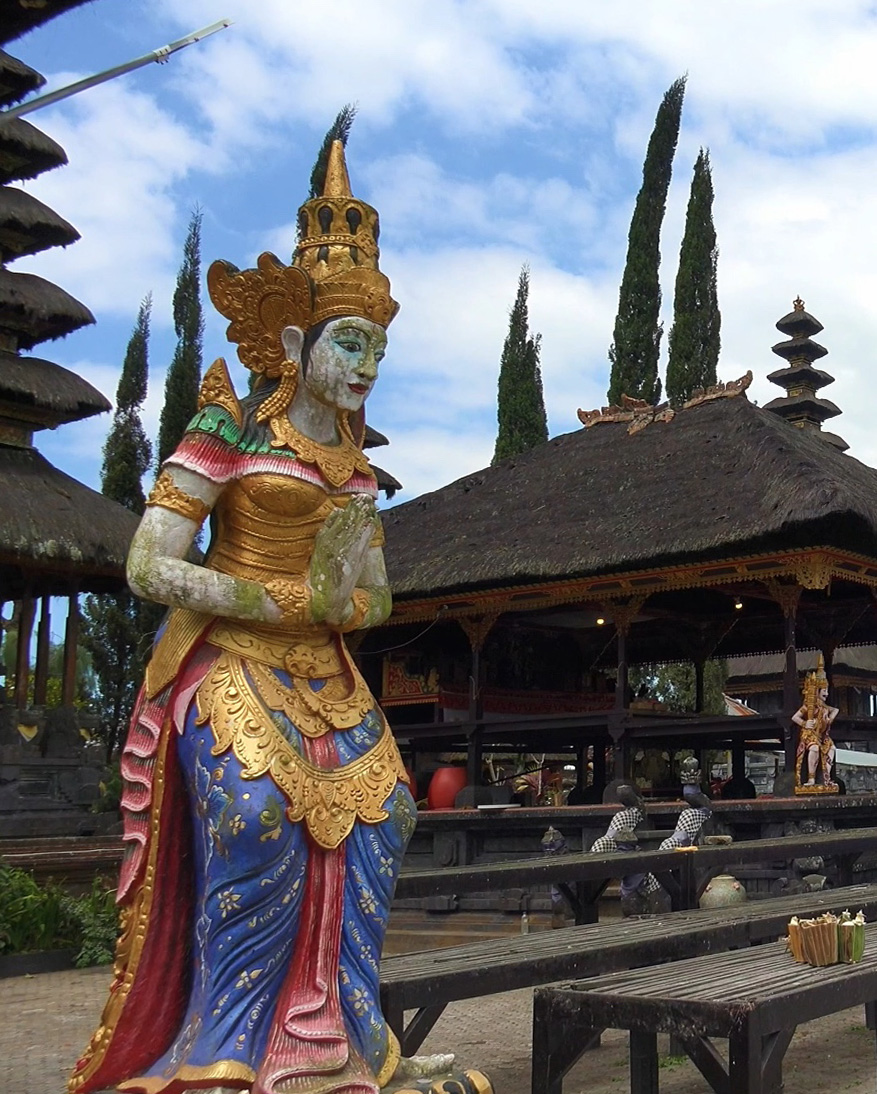
It stays unclear precisely how and when Dewi Danu and her clergymen stepped into the body. However it’s simple to take a position how the rituals, traditions, and steerage supplied by the temples would possibly reinforce the collaborative method the system requires. Lansing’s later analysis signifies that there’s something intrinsically fragile about how subaks perform. As in all democracies, massive and small, a lot concerning the profitable operation of a subak is determined by the political expertise, character, and integrity of its elected chief. Poor governance might place the sleek functioning of the subak—and finally farmers’ rice harvests and livelihoods—underneath menace. Nonetheless, if some subaks labored much less nicely than others, and even grew to become “failed subaks” for a time, the communities’ collective traditions normally asserted themselves ultimately and cooperation was restored. And so long as only some subaks struggled on this manner at anybody time inside anybody watershed, the irrigation community as a complete remained resilient.
From the late Eighties, Lansing and his staff had been gratified to see social and environmental stresses in rural Bali begin to ease, as water temples resumed their position in coordinating irrigation. Cropping patterns once more synchronised and de-synchronised from one rising season to the following in line with environmental situations and cues from neighbouring subaks, reasonably than diktats from central authorities or growth businesses. Pesticide necessities in water temple-controlled subaks fell virtually instantly—inside a single rising cycle—with no lack of rice yields. In the meantime, downstream farmers’ complaints about fluctuations in water provide dried up. But the image isn’t fully rosy. Use of synthetic fertilisers continues to be widespread on Bali. The Indonesian oil and gasoline business facilitates low cost fertiliser manufacturing, and plenty of rice farmers see no cause to not attempt to enhance their yields; notably when excessive yield rice varieties stay dominant in most rice rising areas. In the meantime, urbanisation and tourism-related growth represent a continued twin menace to the subak system, as they diminish the already constrained land space accessible on the island for rice cultivation, and tempt farmers away from subak life with the promise of higher paid jobs within the cities and coastal resorts.
However an necessary lesson was realized. In the end Bali’s Inexperienced Revolution supplied the sturdiest strand of proof for the emergent, self-organising nature of the island’s rice rising panorama. The impact of Bali’s Huge Steerage program on the subak system was, Lansing realised, basically the identical as working the hill-climbing model of the pc mannequin simulation in reverse. It turned out the Indonesian authorities had been pre-emptively conducting their very own extraordinarily efficient real-world verification of the Lansing-Kremer mannequin of Balinese rice cultivation—albeit inadvertently, and at appreciable value to the Balinese individuals.
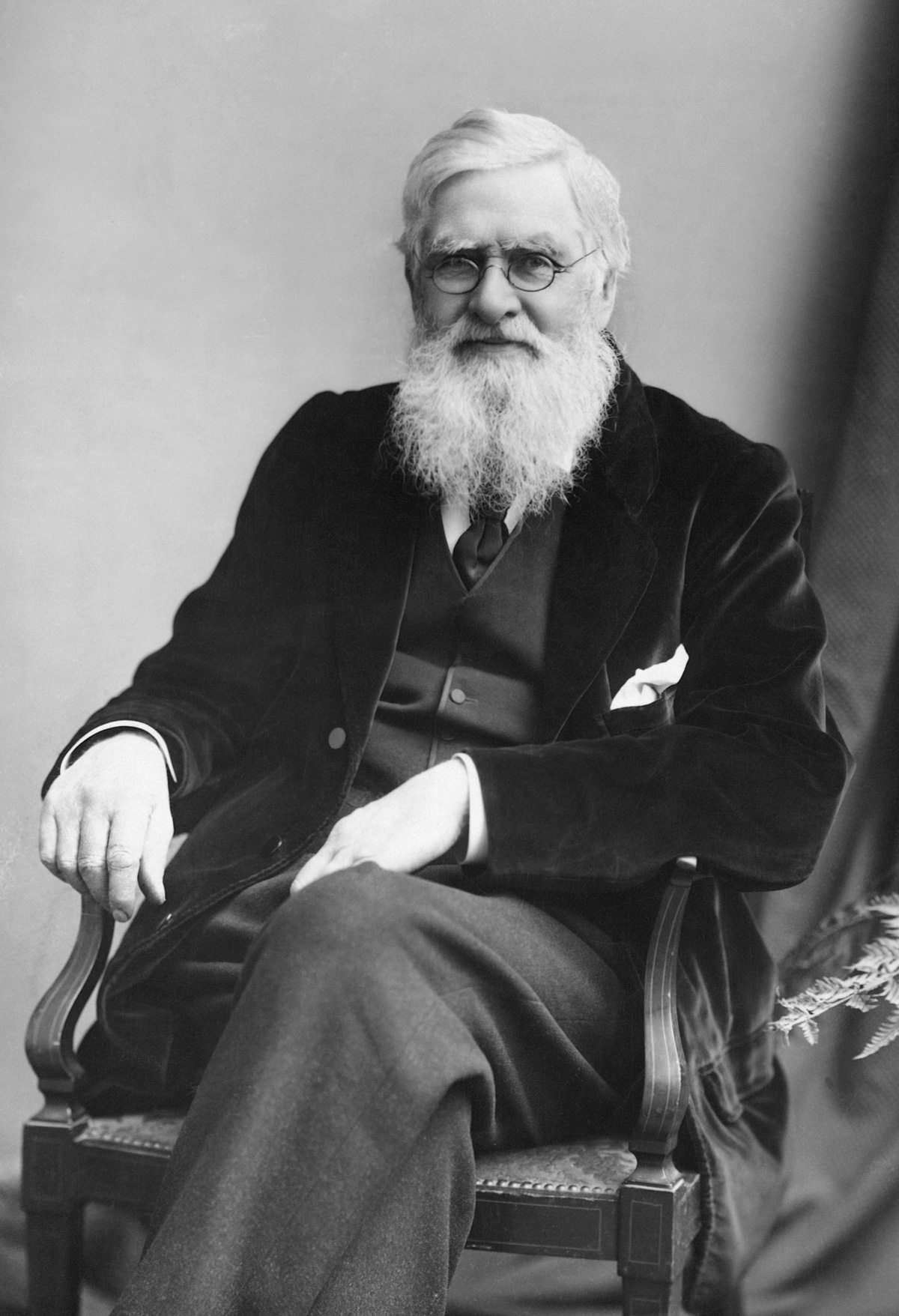
After the British naturalist Alfred Russel Wallace concluded his temporary journey to Bali in 1856, he continued his travels by way of the Malay Archipelago. Two years later, he grew to become unwell with malaria and was confined to a hut on the distant island of Ternate, east of Sulawesi. Within the midst of a fever dream, he got here to a realisation: species develop and alter over the millenia as a result of solely the fittest people survive to move on advantageous traits to their offspring. As quickly as his fever broke, he outlined his thought in a letter and despatched it to a fellow naturalist in England whom he drastically admired—a person named Charles Robert Darwin. Darwin had been struck by the identical thought 20 years beforehand, however up thus far had solely shared his speculations together with his closest mates. Wallace’s letter gave Darwin a much-needed push, and in the summertime of 1858 the 2 naturalists collectively printed a composite paper of their writings entitled “On the tendency of Species to type Varieties.” Regardless of this underwhelming title, the paper contained all the important thing parts of what grew to become the groundbreaking—and initially extremely controversial—Idea of Evolution by Pure Choice. Immediately, each males are credited as co-discoverers of evolution, however after Darwin fleshed out the speculation in his landmark On the Origin of Species the next yr, Wallace’s position pale into the background of historical past.
Like species present process pure choice, advanced adaptive programs iterate and adapt to modifications of their environment. They adapt to their setting—and so they form their setting, too. Maybe, in some intuitive manner, Wallace recognised the delicate signatures of such processes when he gazed at Bali’s rice terraces throughout his brief keep on the island. Even then, his thoughts will need to have been arranging and rearranging the traces of proof that may coalesce into the momentous concept he and Darwin introduced to the world two years later. But his musings on Bali’s exceptionally productive rice paddies remained nothing extra. He by no means formulated a transparent expression, by no means thoughts a proof, of what was so particular concerning the island’s panorama.
Immediately, complexity concept lacks the widespread recognition and software of its shut evolutionary cousin, regardless of inheriting most of the similar rules. Lansing and Kremer are assured that advanced dynamics just like these of Bali’s subak system will, in time, be revealed in different agricultural programs internationally—and, in all probability, in different forms of social programs, too. In his personal work, Lansing has uncovered comparable ‘islands of order’ within the distribution of genetically distinct populations talking totally different languages. And in 2017, he was certainly one of a staff of researchers proposing using satellite tv for pc know-how to display for the presence of advanced adaptive programs in landscapes all over the world. When the staff used satellite tv for pc pictures to measure the general areas of rice fields at every stage of cultivation, they discovered that the ensuing unfold of sizes follows a non-linear sample often called a energy legislation distribution. Whereas energy legal guidelines are hardly distinctive to advanced adaptive programs, they perform as an indicator of ‘connectedness’ inside a frequency distribution—and so would possibly sign the presence of such dynamics. To this point, nevertheless, scientists haven’t conclusively recognized subak-like adaptive dynamics in another agricultural system. In the meantime, researchers proceed to discover the relevance of complexity concept to different fields of human endeavour, similar to economics, healthcare, and politics.
The Balinese subak system’s distinctive standing was recognised internationally in 2012, when the United Nations company UNESCO positioned it on their World Heritage Record— an accolade awarded solely to websites or landscapes of ‘excellent common worth’. UNESCO’s itemizing describes the subak system as a manifestation of the centuries-old Balinese Tri Hita Karana philosophy, which identifies three parts of human wellbeing: concord of spirit, concord of the human world, and concord of the setting. This philosophy neatly traces up with the principal parts of the adaptive, self-regulating community Lansing and his staff spent a long time investigating: the facilitatory position of the water temples, the democratic human traditions of the subaks themselves, and the ecosystem dynamics of the panorama as a complete. On this manner the World Heritage itemizing acknowledges that the Balinese individuals had been conscious of the form, if not the element, of Lansing’s findings all alongside—even when they initially lacked the aptitude to specific them utilizing differential equations inside a pc simulation.
This would possibly clarify the response of the Jero Gde to the query about BaliMod’s usefulness—the clergymen readily acknowledged the relevance of the Lansing-Kremer subak irrigation mannequin, as a result of they recognised its consilience with their very own understanding of the world. The Jero Gde’s reply betrayed the water temple clergymen’ preoccupation with reminding their farmer flock that “all the pieces works collectively.” Certainly, the Jero Gde expressed an as-yet scientifically unverified extension to this perception throughout an off-the-cuff assembly that passed off a while after Lansing and Kremer first demonstrated their mannequin on the supreme water temple. Kremer had expressed concern about their intrusion into the rituals and each day lives of the clergymen and the farmers, pondering they could be thought of disrespectful indirectly. “Jim,” the Jero Gde reassured him, “you don’t for a second think about that your participation on this undertaking was by probability alone?”
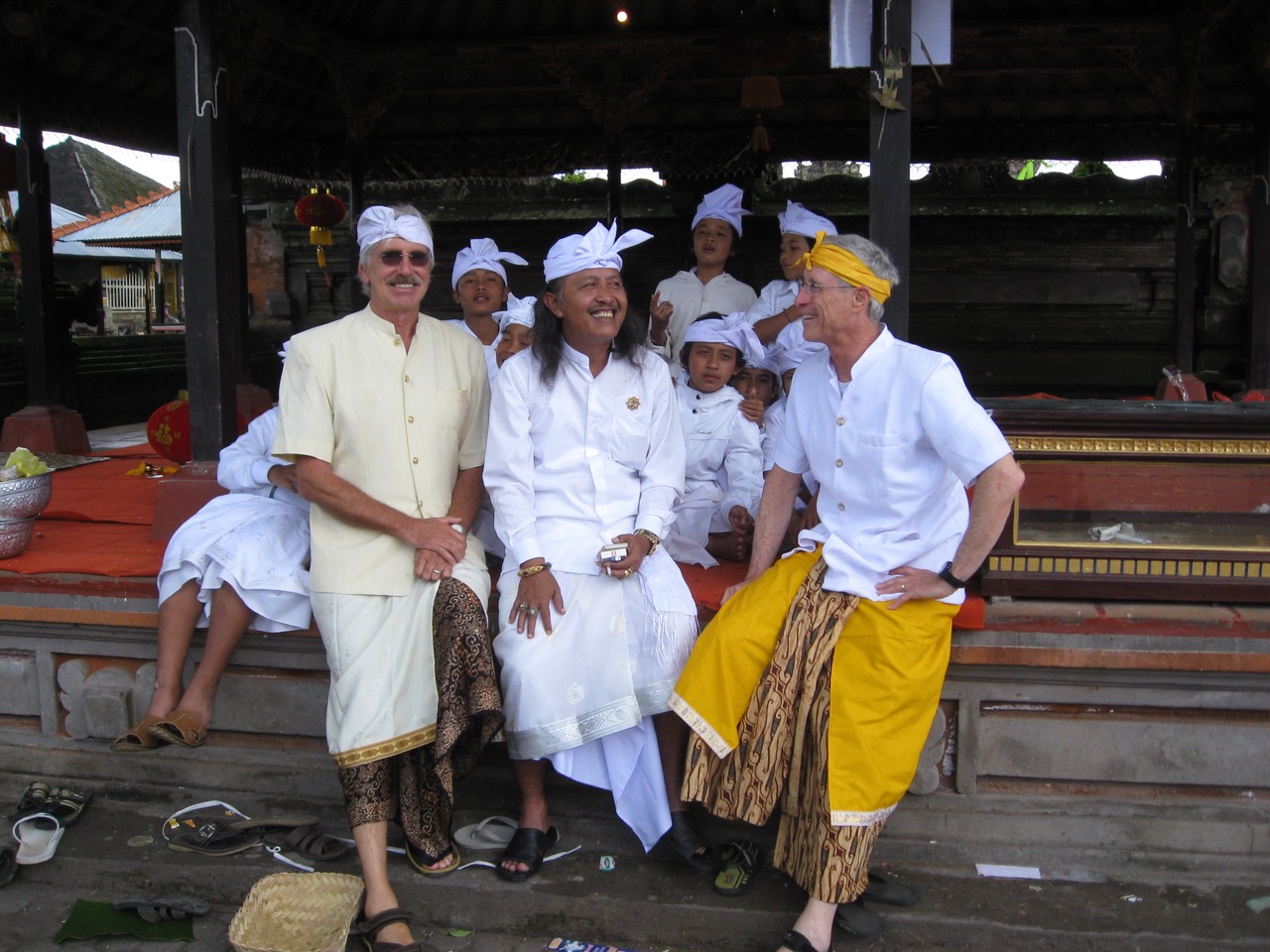
Maybe a part of the issue with self-organising programs—and a part of the rationale their dynamics are so arduous to determine—is that they fade into the background once they perform usually, changing into near-invisible to individuals dwelling contentedly inside them. Till, that’s, one thing goes massively unsuitable. Some type of ‘increased’ data of the system would possibly certainly be helpful in anticipating and avoiding such disasters. Clergymen and laptop applications alike might have a task in avoiding the sort of outcomes described in that well-known Joni Mitchell track from 1970. In spite of everything, it’s a lot better to know what you’ve received earlier than it’s gone.
© 2023 All Rights Reserved. Don’t distribute or repurpose this work with out written permission from the copyright holder(s).
Printed from https://www.damninteresting.com/the-ancient-order-of-bali/
Because you loved our work sufficient to print it out, and browse it clear to the top, would you think about donating a number of {dollars} at https://www.damninteresting.com/donate ?

